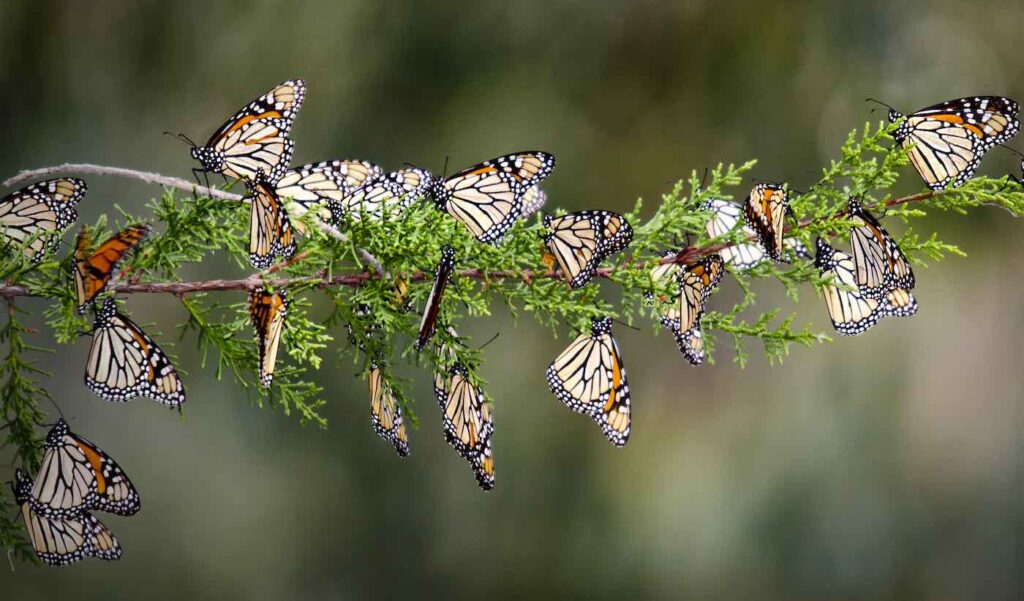Migratory western monarchs are showing up at their overwintering sites in coastal California in far greater numbers—a sign of hope for the struggling population.

These reports are particularly welcome after the population reached an all-time low last year.
This year’s official count has not yet begun. That will take place with the help of over 100 community scientists during the 25th annual Western Monarch Thanksgiving Count, beginning on November 13. Yet these early reports signal the possibility of a rebound in numbers.
On October 16th, 2021, over 1,300 monarchs were counted at the Pacific Grove overwintering site; this site did not have a single monarch butterfly during last year’s count.
The same week, Pismo State Beach Monarch Butterfly Grove and an adjacent site tallied roughly 8,000 monarchs—up from less than 300 butterflies last year.
Additional smaller estimates and observations from volunteers and the public have started to pour in from the Bay Area, Santa Cruz, Monterey, Big Sur, Ventura, Los Angeles and elsewhere.
So far, there appear to be over 10,000 monarchs easily accounted for at the overwintering sites.
The low count of fewer than 2,000 monarchs in 2020 followed two years which produced tallies of under 30,000 butterflies each year.
“We are overjoyed that migratory monarch butterflies have not disappeared from the western U.S.,” said Emma Pelton, a senior conservation biologist and western monarch lead for the Xerces Society for Invertebrate Conservation. “These early counts give us hope that, if we all work together, we can still bring western monarchs back.”
The annual volunteer Western Monarch Thanksgiving Count is coordinated by the Xerces Society for Invertebrate Conservation and Mia Monroe, founder of the count and longtime volunteer coordinator. It is funded in part by the U.S. Fish and Wildlife Service.
It is the primary way that we know the status of the western monarch migratory population.
Why are numbers looking better this year?
Like other insects, populations can fluctuate from year to year, in response to the temperature, rainfall, the availability of food, and other factors.
It is likely a combination of all these factors including favorable conditions at their breeding grounds.
RELATED: Historic Deal to Protect Millions of Monarch Butterfly Habitat Acres is Unprecedented
Western monarchs continue to lack the legal protection that would usher in resources to help recover the population, but there are many things that can be done to improve their chances.
The Xerces Society and partners work to ensure there are plenty of floral resources. They encourage Californians to plant nectar species, especially flowers that bloom in the early spring (February–April) but also in the fall (September–October)—especially native plant species, but particularly native milkweed. Xerces provides more details here.
There are many habitat restoration projects in progress right now to enhance and restore monarch breeding and overwintering habitat in California, but more are needed.
LOOK: Farms in UK Saved This Beautiful Duke of Burgundy Butterfly From Extinction
Legislation proposed in Congress including the Monarch and Pollinator Highway Act (now part of the infrastructure bill) and the Monarch Act (which focuses on western monarchs) could provide critical funding for habitat restoration and research, if passed.
FLY This Nectar of Good News Over to Social Media – Share it!
from Hacker News https://ift.tt/3jS09Fk
No comments:
Post a Comment
Note: Only a member of this blog may post a comment.